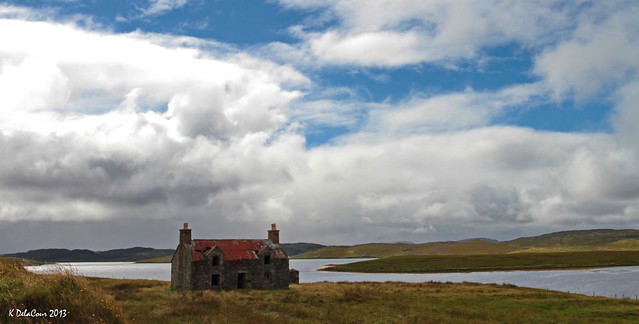
After the recent challenges of The Tarbolton Reel, the Improvers and Beyond class looked at the next reel in the Michael Coleman set, The Longford Collector.
This tune in G sits nicely on flutes and whistle and offers some scope for variation, particularly in the B part. There is not much known abut this tune, which is strongly associated with this set. There are a few variations on the title, and an account of how Michael Coleman gave it its current title on Alan Kuntz’s Tune Archive web site.
Some information on recordings of the tune can be found on Alan Ng’s site Irishtune.info, which puts the earliest source of the tune as 1936, when it was first recorded.
I have put resources for this tune and The Sailor’s Bonnet up on the Resources page for this year.
Photo: Summer sky in Longford, Ireland by Paul Wilson, some rights reserved.

 The Slow and Steady class have been enjoying Breton tunes lately and this tune is a nice contrast to the recent Gavotte Ton Double. In keeping with many Breton tunes, this one has no title other than An Dro, which simply translates as The Dance, in other words it is the principal dance form of Brittany.
The Slow and Steady class have been enjoying Breton tunes lately and this tune is a nice contrast to the recent Gavotte Ton Double. In keeping with many Breton tunes, this one has no title other than An Dro, which simply translates as The Dance, in other words it is the principal dance form of Brittany. Last night the Improvers and Beyond class learned Charlie O’Neill’s No.2, the third and final tune of a set comprising a strathspey and two Donegal highlands. The other tunes are Bidh Eoin and Charlie O’Neill’s No. 1.
Last night the Improvers and Beyond class learned Charlie O’Neill’s No.2, the third and final tune of a set comprising a strathspey and two Donegal highlands. The other tunes are Bidh Eoin and Charlie O’Neill’s No. 1.
